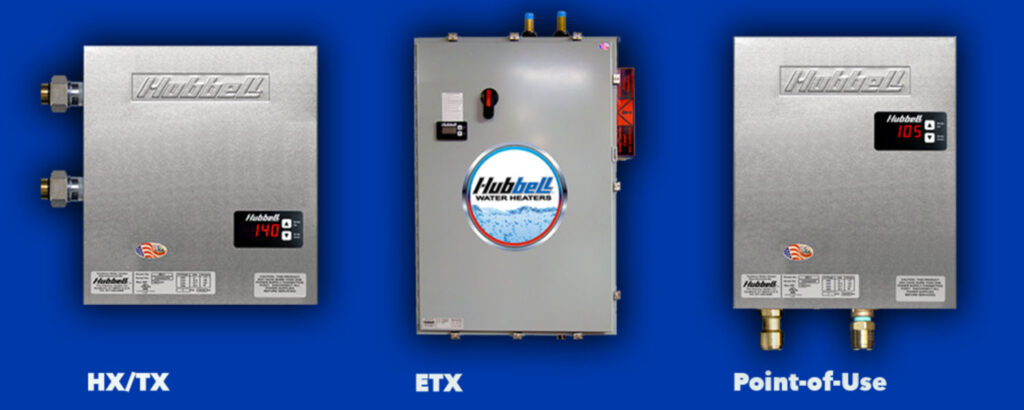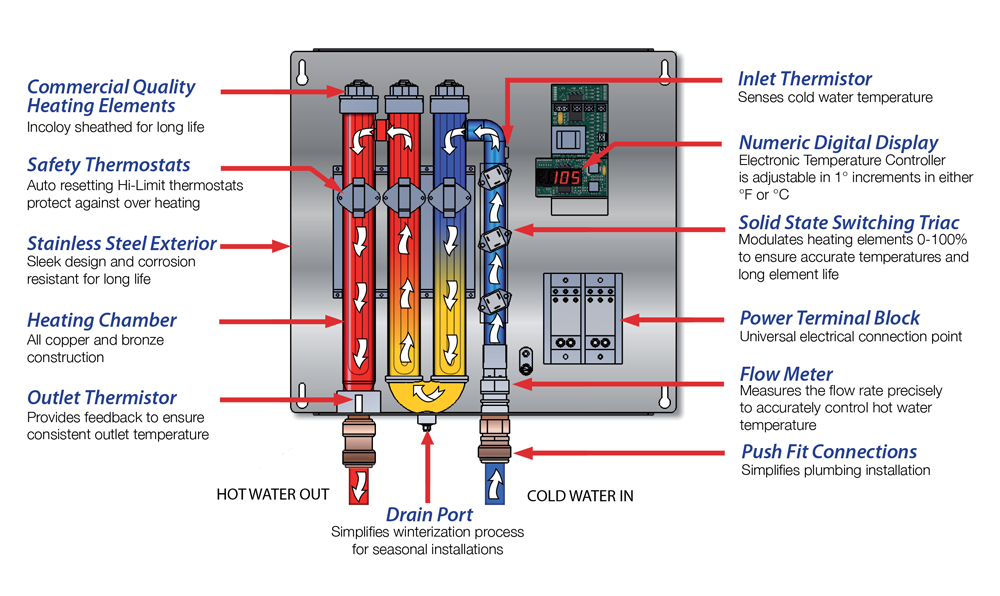

When it comes to commercial water heating, buyers have a choice between tankless and storage tank solutions. Before we evaluate both, let’s start with a little history. The first tank-based water heaters were invented in 1889 in Pittsburg by Edwin Rudd. Although tankless water heaters seem like a more recent invention, they were developed just 40 years later in 1929. As you might guess, they were created for situations where space is limited. Tankless systems have evolved greatly since their inception, particularly over the last 35 years. Both tank and tankless water heaters have their own set of advantages and drawbacks, which is why both are in use today. Deciding which configuration is best for your needs depends on several considerations, so a better understanding of the two solutions can help you make the right decision. Let’s dive in.
How Much Space Is Available?
Space usage is always a key consideration when evaluating any mechanical/capital equipment purchase. Some benefits of a tankless system are that they take up less space than a conventional tank installation and work well for lower-demand, point-of-use applications.
As the demand for hot water increases, so does the size of the heating unit, and the space required to support the proper power infrastructure. A tank system may be best in demanding applications or ones with higher forecasted future needs.
Consider The Electrical Infrastructure
Tankless systems demand increased power over storage-based solutions. They usually require modern high-capacity electrical infrastructure that consists of increased amperage (and possibly voltage), and higher capacity cabling, wiring, and circuit breakers. Keep in mind that a tankless solution might cost more than initially anticipated due to electrical infrastructure upgrades in retrofitting situations. Additionally, although tankless heaters themselves take up less space, you may find you need more space for the high-capacity electrical requirements. For new buildings that have a modern higher-capacity infrastructure already in place, it often makes more sense to go tankless.
Define Upfront And Lifetime Costs
When evaluating your options for hot water solutions, it’s important to look at both upfront AND lifetime costs. For tankless systems, initial costs tend to be higher, due to the need for a high-capacity electrical infrastructure. Electrical system upgrades are often needed, particularly with older facilities. Day-to-day costs can be greater too since most businesses tend to utilize hot water during peak electricity rate times. With a tank-based system, you can minimize this by heating and storing hot water during off-peak hours.
Some, but not all, tank-based systems may have shorter lifespans than tankless models. This is often due to the degradation of the tanks and their linings, as well as other factors. Utility bills could be higher with a tank system since it’s constantly heating the water, rather than heating it only when needed.
Is A Tankless System Greener?
Tankless heater systems are thought of as a green solution when compared to tank-based ones. It’s true! Tankless systems create hot water on demand very quickly and efficiently, however, they are subject to standby heat loss, while storage tanks have made significant strides against heat loss in recent years. For instance, Hubbell’s storage tanks lose about one degree a day, thanks to their highly efficient insulation and design.
So, Which Is Better?
To put it simply, it depends. The best approach for a particular application requires both a very good understanding of current needs and solid forecasting of potential needs while evaluating all cost and efficiency factors. Ultimately, you’ll need to select a system that is economically feasible both short and long-term, and of course, scalable.
Inside A Hubbell Tankless Model HX/TX

The Hubbell tankless water heater is built to provide continuous hot water whenever you need it , When a hot water tap is turned on, water from the cold water pipe enters the water heater and passes through the heat exchanger. With an electric tankless product, the water passes over the heating elements quickly, heating the water to your desired temperature. A tankless electric water heater will provide many years of reliable service in your home and business The cold water enters the unit and passes through a flow meter and inlet thermistor which measure the precise flow rate and temperature of the incoming water. The control system uses advanced logic with solid-state switching devices to fully modulate the power to the heating elements from 0-100% to provide the most accurate and consistent hot water temperatures in the industry. As the water flows out of the unit, a second thermistor makes any necessary adjustments to ensure the Hubbell Tankless delivers accurate and consistent hot water. With numerous control features including the ability to track kW hours consumed, operating cost, and hot water usage, the Hubbell Tankless allows the operator to maximize their savings and gain the most benefit from their investment.